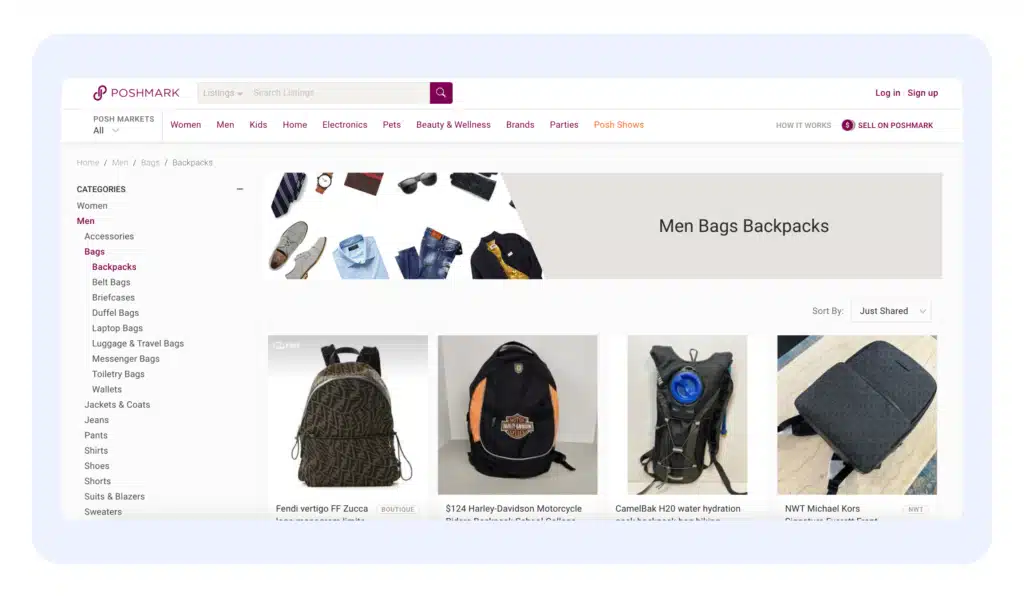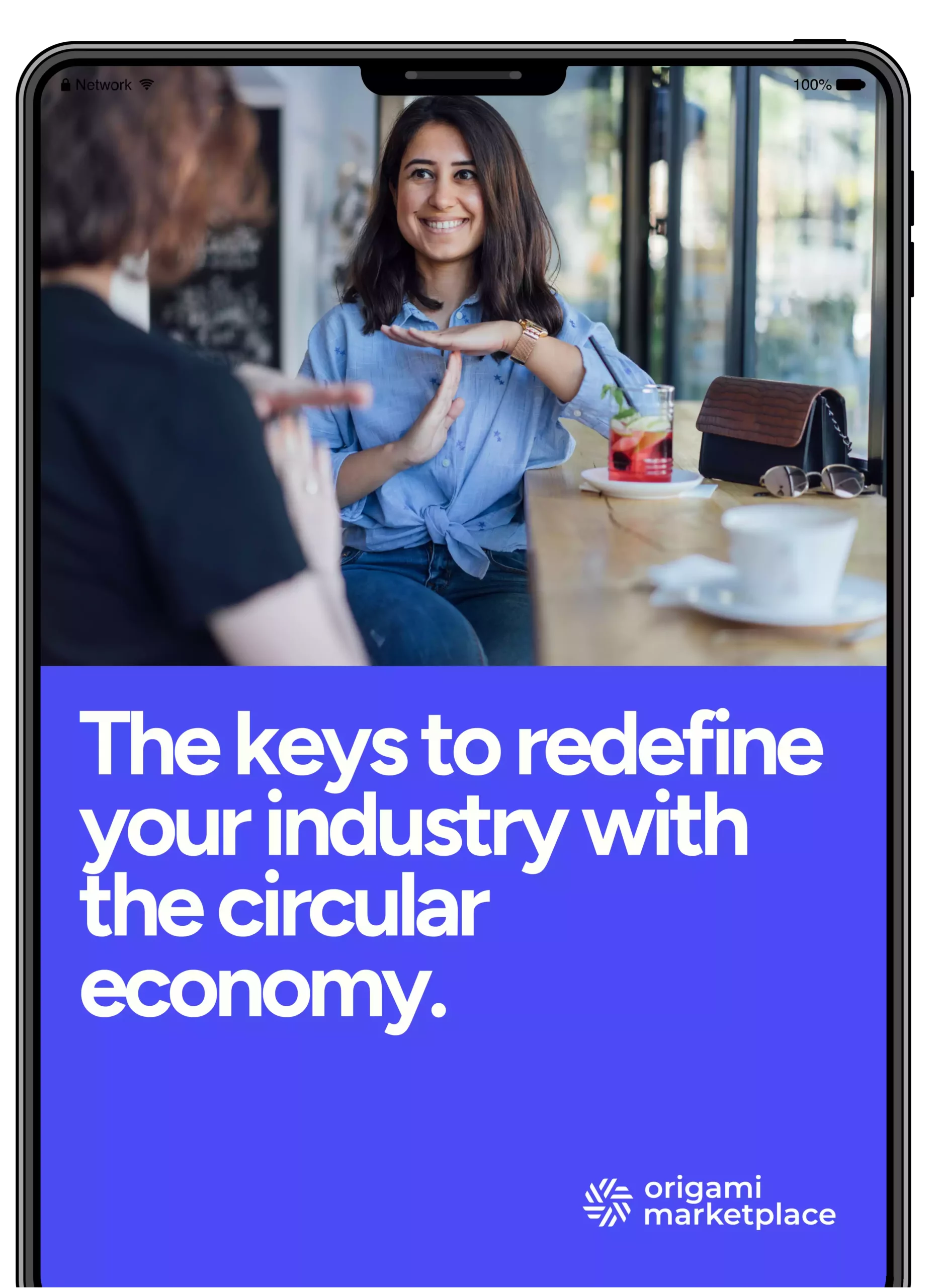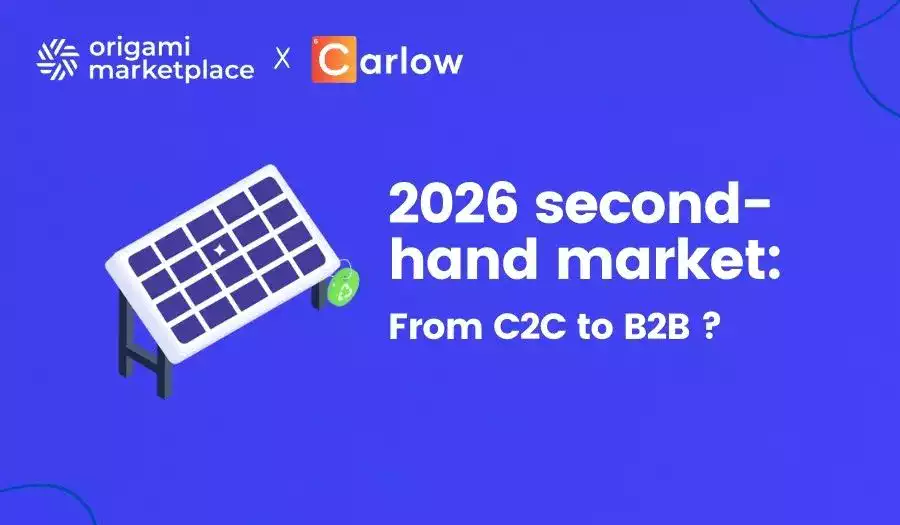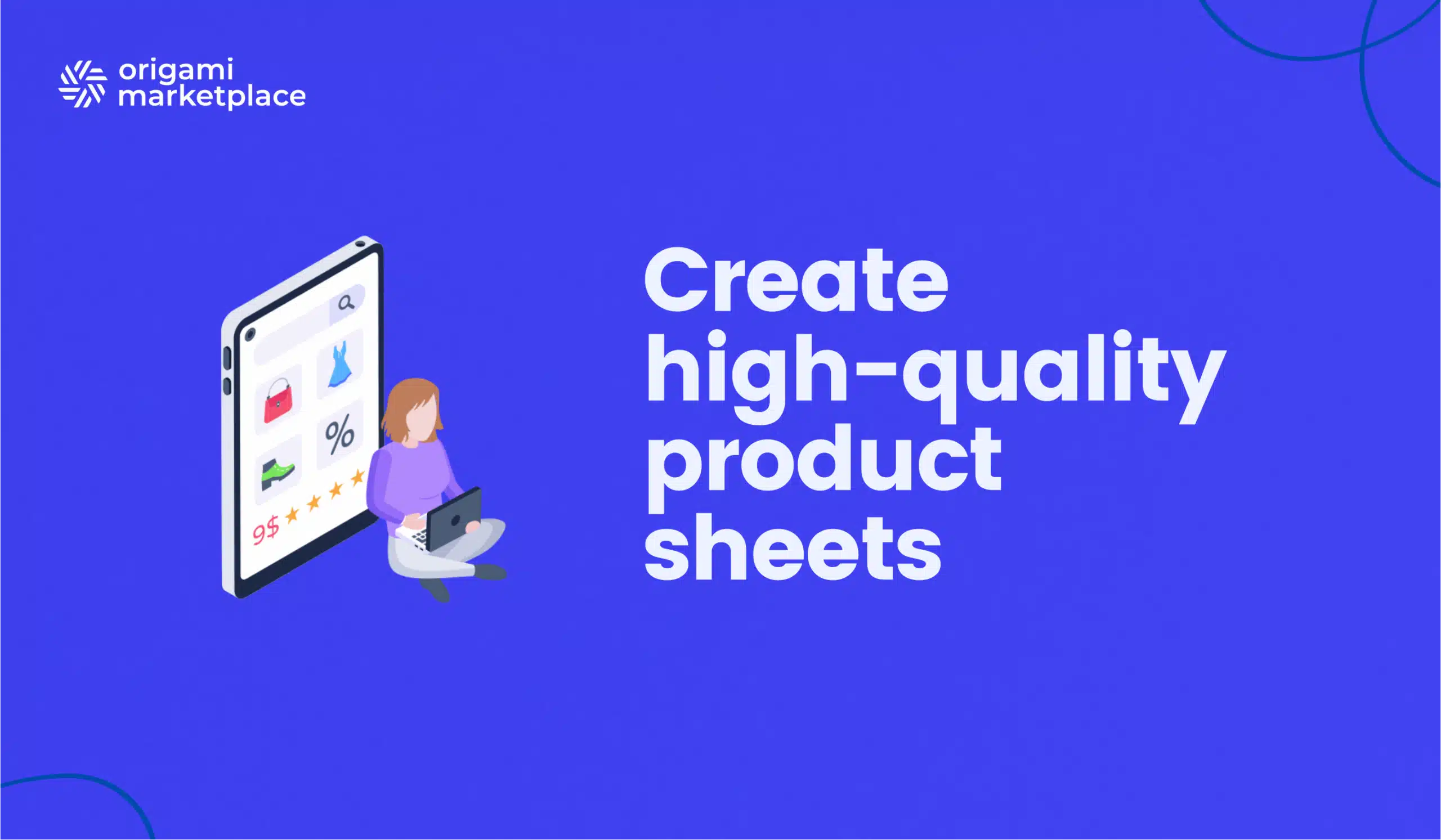How to create a website like Poshmark?
- Arnaud
- 9 minutes reading

Poshmark is one of the most popular consumer-to-consumer (C2C) marketplaces in the United States, dedicated to fashion, accessories, and luxury items. It enables users to easily buy and sell second-hand products while fostering a real community of fashion enthusiasts. In this article, we’ll break down the keys to its success and share best practices so you can launch your own website inspired by Poshmark.
1. What is Poshmark?
2. Key factors behind Poshmark’s success
3. Main features of a Poshmark-type marketplace
4. How does Poshmark make money?
5. How to build a website like Poshmark
6. How much does it cost to create a website like Poshmark?
7. Future challenges for your business, inspired by Poshmark
8. Current trends in the second-hand market
9. Launch your C2C marketplace with Origami Marketplace
👋 No time to read the whole article? Find the summary here.
1. What is Poshmark?
Poshmark describes itself as a social marketplace where anyone can buy and sell clothing, shoes, bags, or accessories from a variety of brands ranging from Michael Kors to Chanel or Louis Vuitton. Users can not only browse numerous closets to find great deals but also sell their own items they no longer need.
- Strong community dimension: Members follow their favorite sellers, leave comments, and participate in online events like “Posh Parties.”
- Secure payments: Poshmark accepts payments via PayPal, credit cards, or Apple Pay, and uses an escrow system for secure transactions.
- Focus on fashion: Although the platform has expanded into home and beauty products, its core activity remains the resale of brand-name clothing and accessories.
To validate a similar concept, it’s often recommended to start with an MVP (Minimum Viable Product) so you can quickly test your idea, collect initial user feedback, and refine your service before making a bigger investment.
2. Key factors behind Poshmark’s success
Social and community aspect: Poshmark focuses on interaction, sharing, and discovery. “Posh Parties” are virtual events where members interact in real time around specific themes (summer accessories, evening dresses, etc.). This approach fosters a strong sense of belonging and engagement.
Simplified user experience: Registration is quick, especially with social login (Google or Facebook), creating a smooth onboarding flow. The mobile app is designed so that listing an item for sale takes just a few clicks, and users receive instant notifications about any questions or completed sales.
Trust and safety: Transactions are secured through an escrow service, which releases payment to the seller only when the buyer confirms receipt of the product. Ratings and reviews further reinforce the reliability of sellers and reassure buyers.
Optimized logistics management (PoshPost): Poshmark partners with USPS to provide prepaid and pre-addressed shipping labels, making shipping much simpler. Sellers only have to print the label and drop the package in a mailbox or request a home pickup.
Physical events and meetups (PoshFest): Poshmark hosts exhibitions and conferences where users can meet, learn best practices, and connect with fashion experts. This approach strengthens the sense of community beyond the digital space.
Download our ebook
Find out the key figures of the second-hand and circular economy sectors. This white paper explores the opportunities, go-to-market strategies and tools you can use to get your platform off the ground.
3. Main features of a Poshmark-type marketplace
If you want to create a similar website, here are the key features to consider:
Sign-up and authentication
- Option to register via email or through a social network (Google, Facebook).
- A user dashboard once logged in, allowing users to track their sales, purchases, and interactions.
Seller page
- Seller information: ratings and feedback, shipping speed, date the account was created.
- Option for buyers to “follow” a seller and see newly listed items.
Seller listings
- All products offered by one seller grouped together.
- Filters available (size, color, price, etc.) to help users find what they want quickly.
Item search
- A search bar and advanced filters to sort products by brand, category, price, condition, etc.
- Clear display of results with photos and prices before opening the detailed product page.
Product view
- Detailed description, multiple photos from different angles, size, color, etc.
- “Add to Cart” or “Make an Offer” buttons, plus the option to comment for any questions.
Payment and escrow
- Integration of a payment gateway (cards, PayPal, etc.) with an escrow system: funds are held until the buyer confirms receipt.
- Easy withdrawal for sellers once the sale is confirmed.
Notifications and community interactions
- Real-time notifications about offers, comments, sales, and events (Posh Parties).
- Likes, sharing, and the ability to invite friends to join the platform.
All of these essential features are already included in a SaaS solution like Origami Marketplace. This saves you from numerous specific development costs and allows you to launch a Poshmark-type website in under four months. To learn more about the full range of our features, visit our dedicated page.

4. How does Poshmark make money?
Poshmark has shown remarkable growth, reaching revenues between $150 million and $200 million in 2018 (compared to $50 million in 2016). Several revenue streams are possible for this kind of marketplace:
Sales commissions
- Poshmark charges $2.95 on sales under $15 and 20% on those over $15.
- Other platforms take either a fixed or variable commission.
Listing fees
- Some websites like Etsy charge a few cents to list an item.
- Poshmark, on the other hand, primarily focuses on sales commission.
Shipping fees
- Poshmark has a flat rate of $6.79 for shipping, paid by the buyer.
- Carrier partnerships allow them to negotiate discounts.
Payment processing fees
- For example, eBay charges fees on PayPal transactions (about 2.9%).
- This can be an additional revenue source.
Promotional listings
- Sellers can pay to have their listings appear at the top of search results or to promote products during special events.
The commission model remains the main source of revenue for most C2C marketplaces because it guarantees long-term profitability and is transparent for users. For more details on this model and how it might affect your future business, check out our dedicated article about commission systems.
5. How to build a website like Poshmark
Start with an MVP (Minimum Viable Product)
- Validate your idea quickly, test your concept with initial users, and refine your platform before adding advanced features.
- Gather concrete feedback (UX, bugs, feature requests) and adapt accordingly.
Provide a great customer experience
- Keep registration, product listing, and shipping as simple as possible.
- Take inspiration from “PoshPost” by offering prepaid labels to remove any logistical hurdles.
Create a strong community
- Organize virtual events (like “Posh Parties”), encourage interaction, and highlight your most active members.
- Forums, chats, blogs, or social media can all foster a real sense of belonging.
Protect your users from fraud
- Implement an escrow payment system, verify the authenticity of luxury products, and make returns easy in the event of a dispute.
- Buyers should be able to report counterfeit goods and receive a refund if the product doesn’t match its description.
Automate wherever possible
- Notifications, package tracking, and commission calculations can all be automated to reduce manual tasks and improve customer satisfaction.
Ready to turn your B2B, B2C, or C2C marketplace vision into reality?
To help you develop the best platform possible, we’ve gathered all the must-have features, key technical considerations, and best practices in a comprehensive document:
Download the Specifications template 🗒
Perfect for smaller or medium-scale projects without a formal purchasing process. It will help you outline your requirements effectively and streamline your selection process.
Download the Request for Proposal template 📒
Ideal for larger, more complex marketplace projects with a formal purchasing department or advanced procurement policies.
6. How much does it cost to create a website like Poshmark?
Your budget depends on the approach you choose:
Custom development
- Dedicated tech team, higher costs, longer timelines.
- Maximum flexibility to create every detail to your specs.
Specialized SaaS solution
- Faster launch with controlled costs.
- Ready-to-use features (payment, shipping, messaging, etc.) and options for customization.
With Origami Marketplace, you benefit from a turnkey solution to launch your C2C marketplace quickly. You can then focus on user acquisition and retention rather than dealing with technical development.
7. Future challenges for Your business, inspired by Poshmark
Returns management and customer service
- Trust hinges on a clear return policy and responsive support.
- Resolve disputes rapidly to avoid frustrating your users.
Counterfeit protection
- Prioritize security by verifying the authenticity of luxury products (photos, certificates, etc.).
- Block or penalize sellers who repeatedly list fake goods.
Growth and scalability
- Prepare your infrastructure to handle a growing number of users.
- Poorly optimized systems can slow down, harming the user experience.
Geographical expansion
- If you plan to expand internationally, consider customs regulations, language differences, and cultural nuances.
- Adapt your marketing strategy and logistics partners to each region.
8. Current trends in the second-hand market
Exponential growth of C2C: C2C marketplaces address two major needs: buying at lower cost and consuming more responsibly.
Green fashion and sustainable style: Consumers are becoming more aware of the environmental impact of fashion. Platforms like Poshmark encourage reuse and extending the life of clothing.
Industry specialization: Vertical marketplaces (vintage, sports, luxury, tech, etc.) are multiplying to cater to specialized communities.
Influence of social media: Users love sharing their outfits and finds on Instagram, TikTok, and more. The “showroom” approach and short video formats are on the rise.
9. Launch your C2C marketplace with Origami Marketplace
Want to create a website inspired by Poshmark? Origami Marketplace offers:
A robust, flexible SaaS solution that includes:
- 160+ specialized marketplace features
- Secure payments
- Integration with numerous carriers to streamline logistics
- Internal messaging, ratings, and dispute management
Tailored support from experts who will:
- Help define your concept and business model
- Implement key features and customize your platform
- Optimize user experience and foster community development
Before you launch, validate your MVP, estimate costs, plan for logistics and dispute resolution, and develop a strong brand image. By relying on a proven technology like Origami Marketplace, you put yourself in the best position to build a successful ecosystem.

Alexandre Duquenoy
→ Talk to our solution expert.
Poshmark’s success relies on the combination of a strong community aspect, streamlined logistics, and a well-thought-out business model (sales commissions, shipping fees, etc.). To create a similar website, start small (with an MVP) and make sure to provide a flawless user experience, a secure payment system, and a friendly environment for your community.
Ready to turn your C2C marketplace vision into reality? Contact us to speak with our experts and discover how Origami Marketplace can help you build a successful platform, inspired by the Poshmark example.
Quick summary for the busy readers:
What is Poshmark? Poshmark is a social marketplace for buying and selling second-hand fashion, accessories, and luxury items, with a strong community focus (e.g., Posh Parties).
Keys to its success:
- Engaged Community: Social interactions, virtual events, and comments.
- Simplified Experience: Quick registration, easy item listing, and instant notifications.
- Secure Payments: Escrow system to protect buyers and sellers.
- Optimized Logistics: Prepaid shipping labels through USPS partnerships.
How does Poshmark make money?
- Sales commissions (20% on sales over $15).
- Flat shipping fees for buyers.
- Paid promotions for sellers’ listings.
How to build a similar website:
- Launch an MVP to test your idea quickly.
- Provide a smooth experience (registration, listing, shipping).
- Build a strong community and secure transactions.
- Automate tasks for efficiency and scalability.
Market trends:
- Rapid growth of C2C platforms.
- Rising interest in sustainable fashion and reuse.
- Growing influence of social media and short video content.
Want to launch your own C2C marketplace? Origami Marketplace offers a turnkey SaaS solution with 160+ features, secure payments, and integrated logistics. Quickly test your concept and focus on community building and growth.
✨ Ready to start? Contact our experts to learn more!



